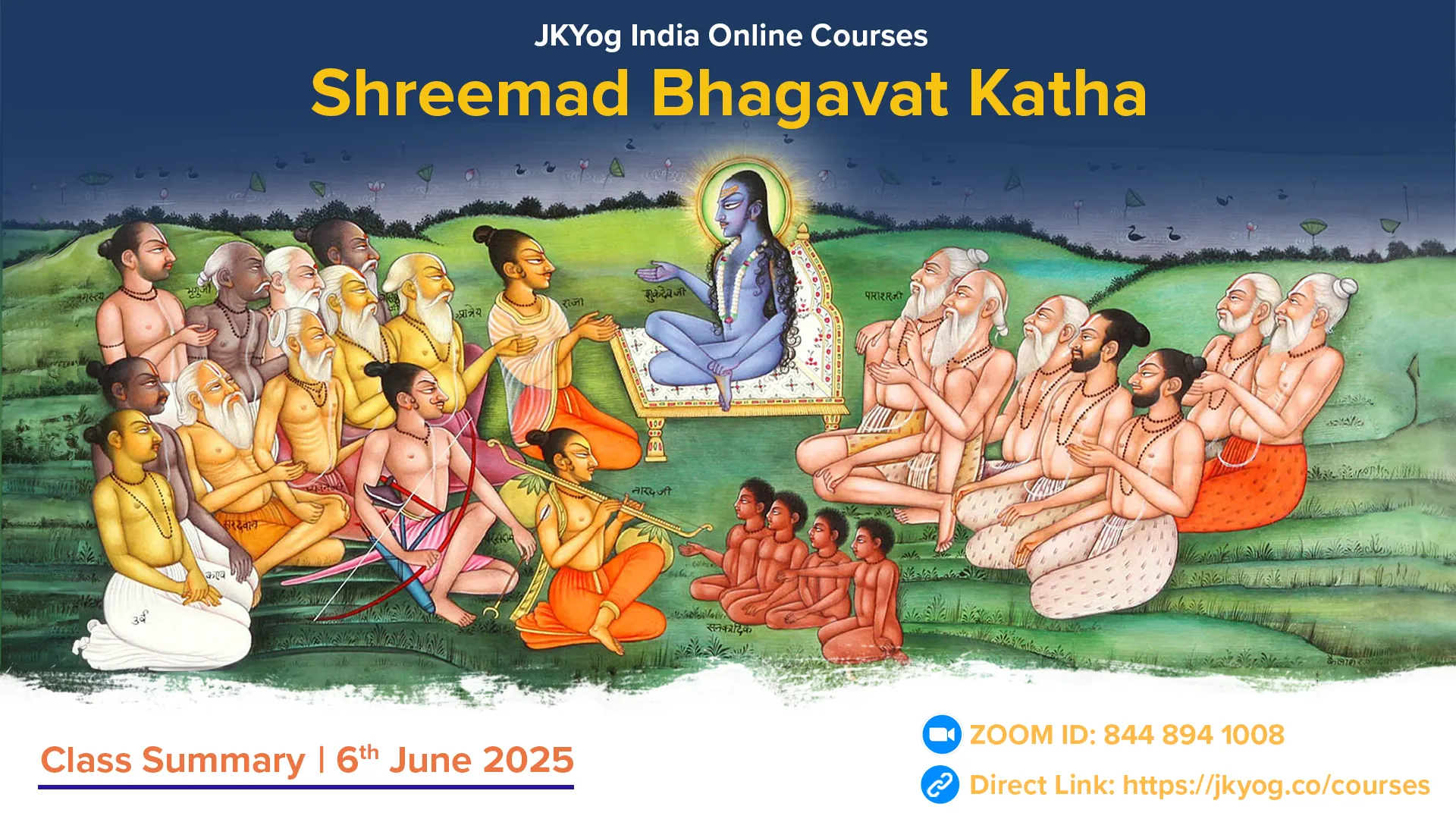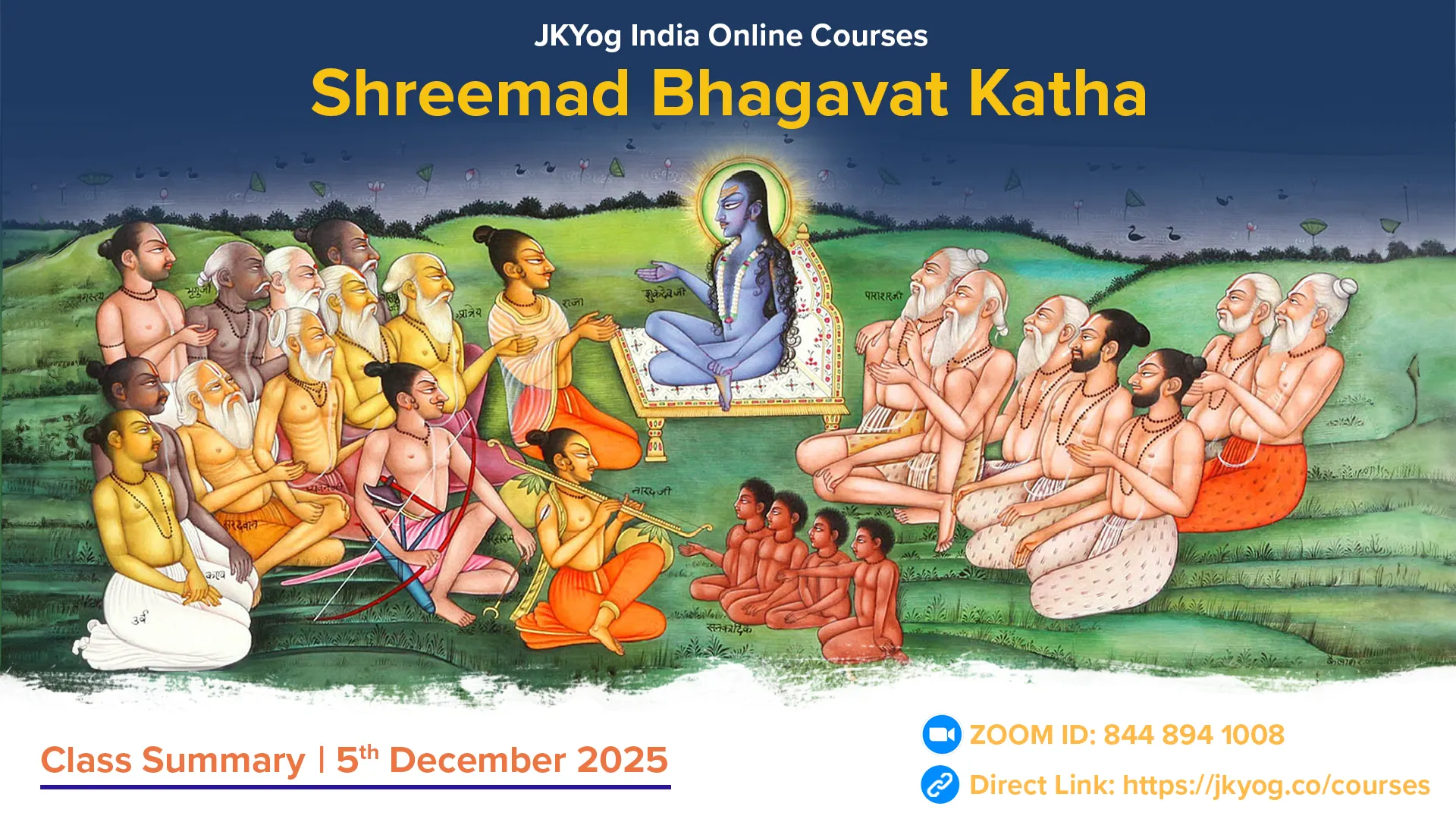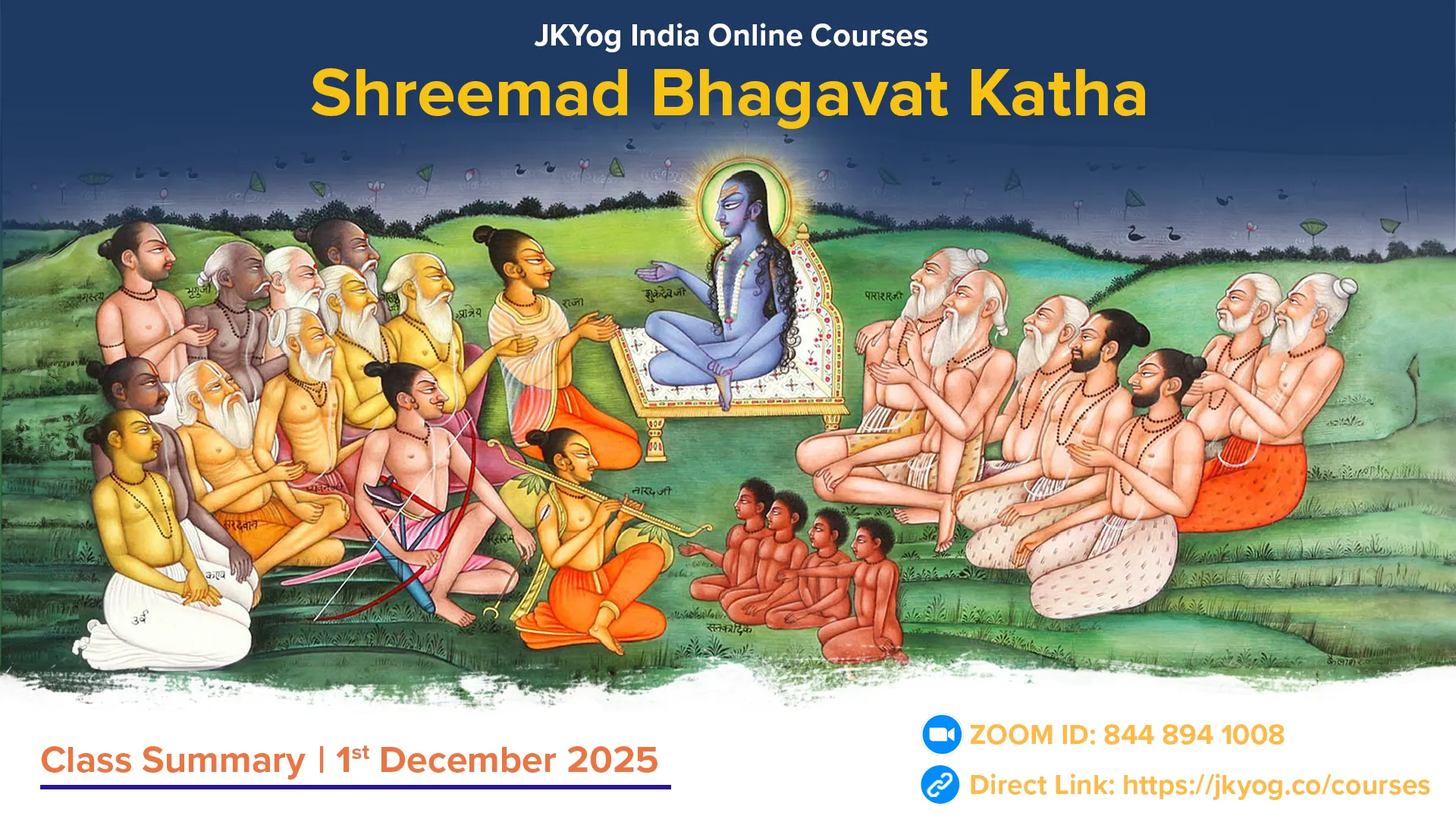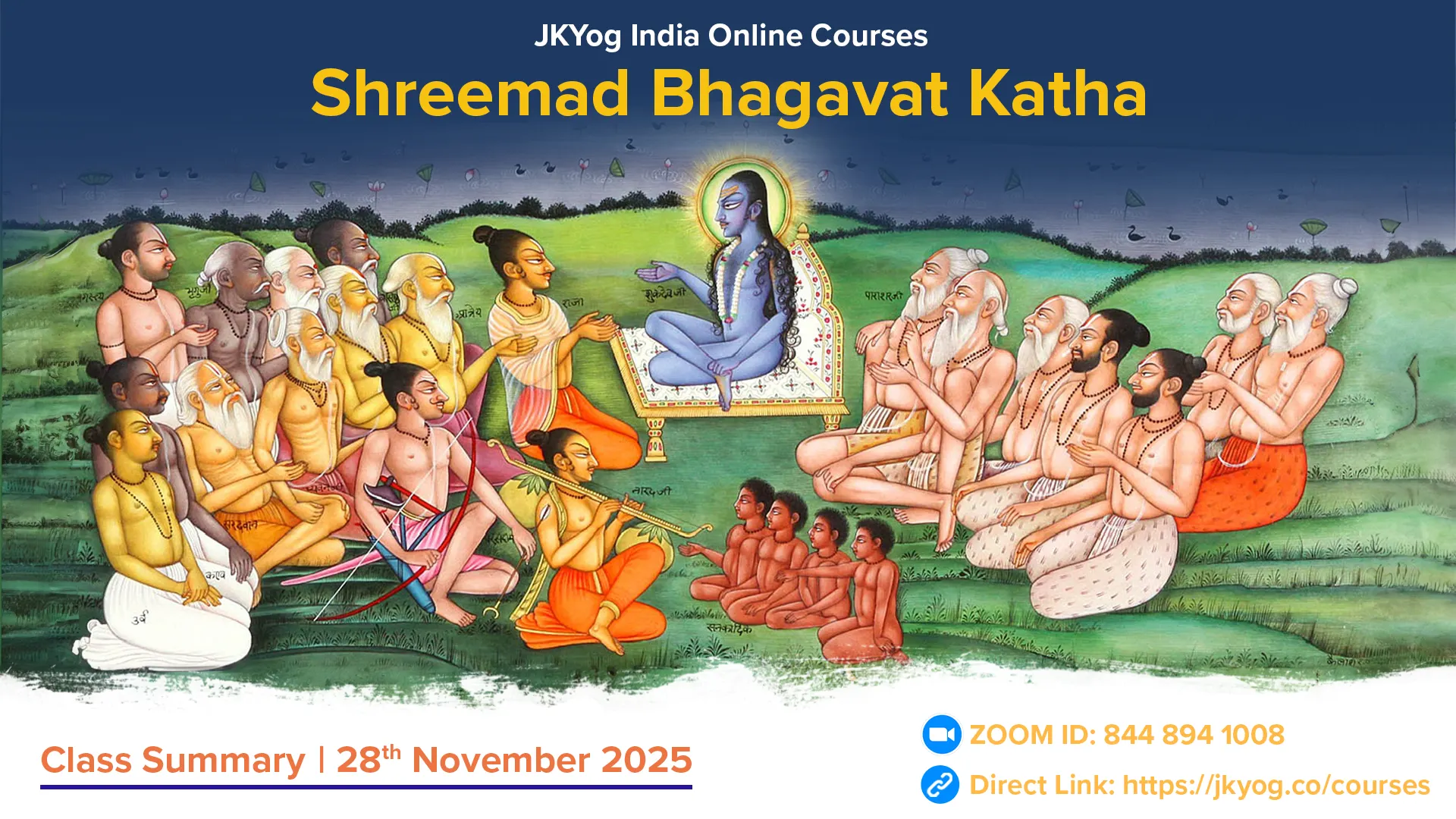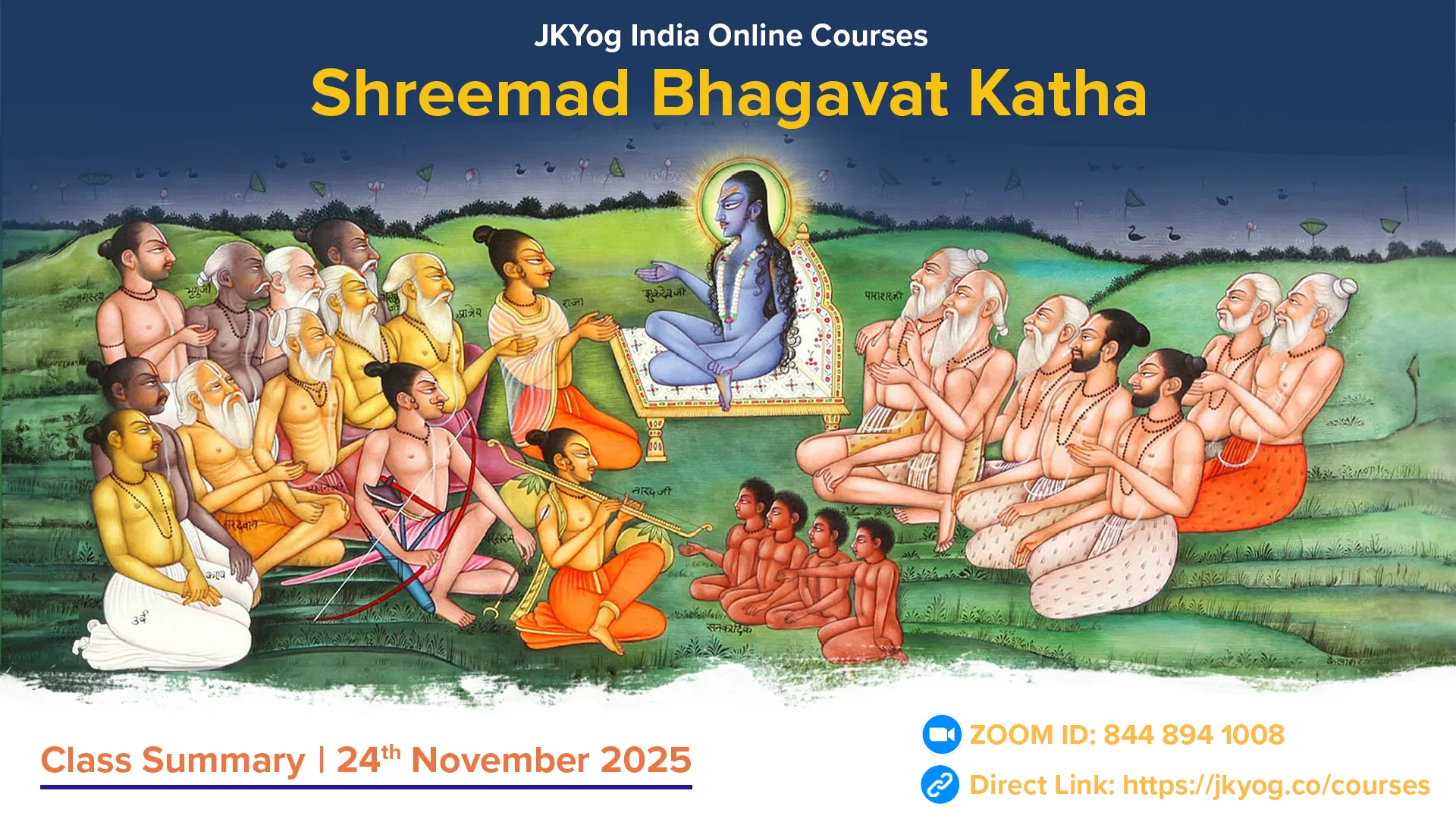Shreemad Bhagavat Mahapuran- Canto: 8, Chapters: 8- 9
Once Bhagwan Shankar consumed the terrifying halaahal poison to save the worlds, a wave of relief spread through the devas and asuras. Energised and grateful, they returned to the great task of churning the cosmic ocean with renewed zeal.
The first to emerge was Kamadhenu, the celestial cow with divine qualities. The rishis immediately recognised her value for sacrificial rituals and humbly accepted her.
Next rose Uchchaihshrava, the majestic white horse glowing like moonlight. King Bali was drawn to its unmatched grace and claimed it. Indra, mindful of Bhagwan’s prior instructions, made no objection.
Then emerged Airavat, the mighty elephant with four magnificent, glistening tusks. Regal and powerful, he became the pride of the devas.
Soon after came the dazzling Kaustubh Mani, a gem of extraordinary brilliance. Bhagwan Vishnu placed it on His chest, where it continues to shine.
From the depths followed the enchanting Kalpavriksha, the lush and divine wish-fulfilling tree. It was taken to the heavens, where it adds to the splendour of Swargalok.
Finally, the apsaras appeared—celestial maidens of ethereal beauty adorned in gold ornaments and silken garments. With graceful strides and mesmerising glances, they began to delight and uplift the hearts of the devas.
After that, Bhagwati Lakshmi Devi manifested from the ocean. She is God's eternal divine energy (nitya shakti), and her brilliance lit up all directions like lightning. Her beauty, youth, and divine majesty captivated not only the devas and asuras but also humans. Indra brought a beautiful seat for Her to rest upon. The rivers offered golden pots filled with sacred water, the earth gave herbs, and the cows presented panchagavya (five sacred products of the cow). The season of spring contributed fragrant flowers and luscious fruits. The rishis, using all these auspicious items, performed a ritualistic abhishek (ceremonial bathing) of Lakshmiji with full devotion. Gandharvas began to sing, apsaras danced, and the skies echoed with the sounds of divine instruments.
Then Lakshmiji, holding a lotus in Her hand, ascended a resplendent throne. The diggajas (elephants of the directions) bathed Her with pure water. The ocean offered golden garments; Varun gifted the fragrant Vaijayanti mala; Vishwakarma presented exquisite ornaments; Saraswati offered a pearl necklace; Brahmaji gave Her a lotus; and the Nagas gifted divine earrings.
Following this, Lakshmiji, adorned with a garland of lotuses in Her hand, stepped forward to choose a worthy consort. Her radiance, modesty, and gentle smile at that moment were beyond description. She desired to offer Her love only to that person who was flawless, eternally adorned with all noble virtues, and beyond decay.
But among the Gandharvas, Yakshas, Asuras, Siddhas, Charanas, and Devas, none matched Her vision. Some were ascetics, yet not free from anger. Some had knowledge but lacked detachment. Some were wealthy yet dependent on others. Some were brave but subject to death. Others were renunciates but always absorbed in meditation.
Finally, Lakshmiji concluded that only Bhagwan Vishnu possessed all auspicious qualities in their absolute and eternal form. He is dependent on none, complete in Himself. And so, She chose Him.
Lakshmiji garlanded Bhagwan Vishnu with the lotus garland and stood beside Him, gazing at Him with eyes full of love and shyness. Bhagwan Vishnu welcomed Her by offering Her a permanent place on His heart.
With this divine union, joy surged across the three worlds. Lakshmiji’s glance of grace blessed the devas and all beings with virtue, prosperity, and happiness. And when Lakshmiji disregarded the daityas and danavs, a transformation came over them—they became weak, lazy, shameless, and greedy.
Soon after, from the churning of the ocean emerged Varuni Devi, the goddess presiding over wine and intoxicating drinks. With Bhagwan’s permission, the daityas accepted her.
Then, as the devas and asuras resumed the churning with a burning desire for Amrit (the nectar of immortality), a wondrous, divine being appeared from the ocean. His broad and powerful arms, conch-shaped neck, reddish eyes, handsome dark complexion, yellow garments, gleaming ornaments, and lion-like strength made Him incredibly radiant. His beauty and divine aura were unmatched—He was youthful, mighty, and captivating in form.
In His hands was a golden pitcher filled with Amrit, and He wore bracelets that sparkled with celestial light. This being was none other than a partial incarnation (anshansh avatar) of Bhagwan Vishnu Himself. He later became renowned as Dhanvantari, the divine physician and originator of Ayurveda and the receiver of offerings in yajnas.
When the daityas saw the Amrit-kalash (pot of nectar) in the hands of this divine being, they forcefully snatched it away. They had already been plotting to take possession of all the treasures emerging from the churning of the ocean.
The devas, deeply saddened by the loss of the Amrit, sought refuge in Bhagwan Vishnu. Seeing their distressed state, Bhagwan reassured them:
"Do not worry. With the power of My maya, I shall create discord among them and ensure that you receive the Nectar."
At that very moment, disagreements broke out among the daityas over who should drink the Amrit first.
"I will drink first!"
"No, I will!"—they all began quarrelling amongst themselves.
Thus, through Bhagwan’s maya, division and dissatisfaction spread among the asuras, opening the path for the devas to receive the Amrit eventually.
As the daityas argued fiercely over who would drink the Amrit first, Bhagwan Vishnu assumed a wondrous and indescribable female form—the enchanting Mohini avatar. In this form, Bhagwan’s body was the deep blue-black of a blue lotus, every feature exquisitely attractive. Her beautiful cheeks, high nose, slender waist, and fragrant face made her incredibly charming. Her graceful walk and gentle smile filled the atmosphere with irresistible allure.
A garland of jasmine flowers adorned Her hair, jewels sparkled around Her neck, armlets hugged Her arms, the sweet tinkling of anklets echoed with every step, and a shimmering waistband accentuated Her waist—each detail enhancing Her captivating form.
In this Mohini form, with a coy smile, dancing eyebrows, and a luxurious gaze, Bhagwan stirred desire in the hearts of the daitya commanders. Enchanted and entranced, they began to lose themselves in Her charm, and Bhagwan’s plan started to succeed.
Mesmerised by Mohini, the daityas completely forgot their quarrel and rushed to Her, asking eagerly, “O lotus-eyed beauty! Who are you? Where have you come from? What is your purpose? Seeing you has stirred restlessness in our hearts.”
They went on to confess their problem, saying, “We all belong to the same lineage—sons of Maharshi Kashyap—yet here we are, fighting and envying each other over the one Amrit. O beautiful one! Please graciously distribute the Nectar fairly so that no more quarrels arise among us brothers.”
With full faith, the daityas requested Mohini to divide the Amrit among them. Smiling playfully, Bhagwan Vishnu, still in the female form, glanced sideways and replied cleverly, “You all are wise sons of Maharshi Kashyap, while I am but a whimsical woman. How can you entrust the responsibility of justice to a fickle woman like me? Wise people never trust capricious women. To believe me would be foolishness.”
Amused by Mohini’s teasing words, the daityas fully trusted Her and laughingly handed over the pot of Amrit to Her. Taking the pot gently in Her hands, Mohini smiled softly and spoke sweetly, “Whether what I do is right or wrong, if you all accept it, then I shall distribute this Amrit.”
The daityas were taken entirely in by Mohini’s words and accepted her without knowing her true form. They all observed a day of fasting, bathed, performed sacred fire rituals (havan), gave charity, and donned new clothes and ornaments. Then they sat facing east in eager anticipation. Mohini appeared, dressed in a beautiful sari, holding the pot of Amrit. Both devas and daityas were captivated by her stunning beauty.
Bhagwan thought, “The asuras are cruel; they should not receive the Nectar.” So She arranged the devas and daityas in separate lines. Holding the pot of Amrit, Bhagwan approached the daityas first. With gestures and subtle mockery, She distracted them and then moved to the devas seated farther away, offering them the Nectar that destroys old age and death.
The asuras, having promised to obey, kept their word. They had grown fond of Mohini and felt ashamed to quarrel with such a lady, so they remained silent. Their attachment to Mohini had become deep. Mohini had also treated them with great respect, which only bound them further. That is why they did not speak a single unpleasant word to her.
While Bhagwan, in the form of Mohini, was distributing the Amrit to the devas, a daitya named Rahu stealthily disguised himself as a deva and sat among them. Cunningly, he drank some of the Amrit. But the Moon and the Sun saw through his disguise and exposed him. Then Bhagwan swiftly cut off Rahu’s head with the Sudarshan Chakra. Since the Amrit had only reached his throat, his head became immortal while his body fell away.
Brahmaji honoured Rahu’s immortal head as one of the celestial planets (‘grahas’). Since then, Rahu has held enmity against the Sun and the Moon. On the full moon day, he attacks the Moon; on the new moon day, he attacks the Sun. When either the Sun or the Moon aligns with Rahu’s shadow, eclipses occur.
After the devas drank the Amrit, Bhagwan discarded the Mohini form and revealed His magnificent divine form before the mighty daityas.
Shukdevji tells Parikshit that both devas and daityas had the same objective, place, and purpose, and performed the same action simultaneously, yet the results were vastly different. The devas easily attained the fruit of their efforts—the Amrit—because they took refuge in Bhagwan’s lotus feet. The asuras, however, turned away and remained deprived of the Nectar despite their efforts.
When a human being performs actions for the sake of the body, children, wealth, or pleasure, there is selfishness and differentiation, so the results are limited and temporary. But when one surrenders life, actions, and wealth to Bhagwan with selfless devotion (nishkama bhava), the fruits of those actions become auspicious and prosperous not only for oneself but also for one’s family and the entire world.
Just as watering the roots of a tree nourishes the trunk, branches, and leaves, actions taken for Bhagwan bring beneficial results for all. Bhagwan churned the ocean, obtained the Amrit, and gave it to His own devas. Then, mounting Garuda, He departed from there before anyone could notice.
Summary: JKYog India Online Class- Shreemad Bhagavat Katha [Hindi]- 06.06.2025

